Ambositra
Monday, July 28, 2014
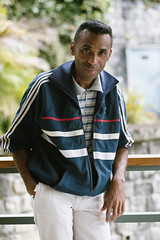
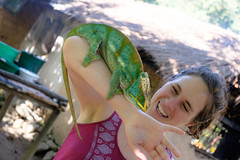
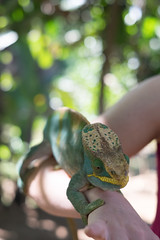
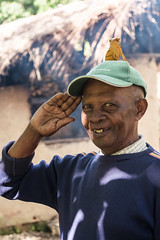
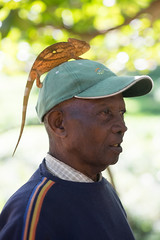
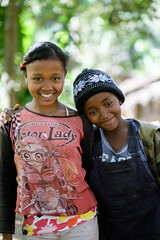
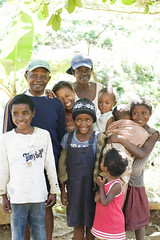
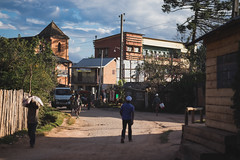
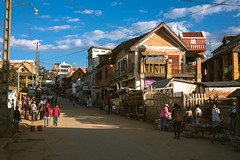
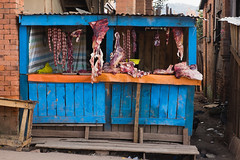
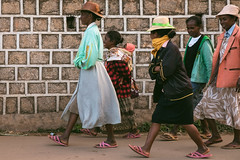
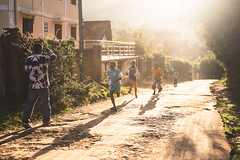
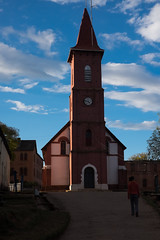
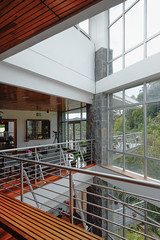
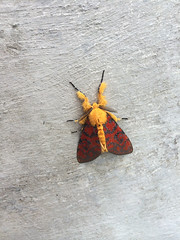
We started our day with a tour of Centre Valbio. It is a Ranomafana research and education center with a close connection with SUNY Stoneybrook. A professor named Patricia Wright was doing her research in Ranomafana and found the Golden Bamboo Lemur, previously thought to be extinct. This helped lead to the establishment of the park. Patricia went on to establish the center with the goal of continuing to protect the forest I am guessing.
Our guide was Nemese, usually involved with the education the center does with the 32 villages that surround Ranomafana about biodiversity, new ways to grow rice that I am assuming don’t harm the forest, health, and other topics. The two tourism coordinators were out at the time so he gave the tour and Fan translated.
In terms of research, the center has very nice labs, dorms, and a conference center for visiting students and researchers. Seems like many come through.
All in all the center employs 80 people – only three of which are Americans and the rest Malagasy. In fact there were about twenty of the Malagasy porters we saw yesterday all waiting to start bringing equipment to the research station in the primary forest – a 4 hour walk. I wish we had time to check that area out but we need to get going today.
It was a beautifully designed building with a great view from its green roof. It also had an interesting mini museum including a bone and egg fossil from the 9 foot tall (extinct) elephant bird.
We decided to visit Stephan’s father’s farm to see if we could catch the Parson’s chameleon. It’s hard to see in the actual forest but really easy to find at his dad’s house. His dad takes a small fee and sees a couple of tourists a week in the busy season.
Stephan’s 95 year old dad, Fidisol, lives on a nice little property right next to a stream, across from some forest and shaded by a gorgeous “umbrella tree” or atafa in Malagasy. He inherited the property from his ancestors.
This place was not on the regular tourist trail so there was the element of “gaping at the vazaha” by Fidisol’s grand children and great grandchildren and the surrounding mini village.
But tourists have visited before and two of the children and Fidisol himself knew immediately what to do when we got there. The appropriately named Tsiki (“smile” – she had a gorgeous one) climbed a tall tree and Frederick grabbed a long stick in order to rouse the chameleons from their spots in the surrounding trees.
Within moments I was presented with one of my favorite animals from the trip – the parson’s chameleon. This is your classic stereotypical chameleon and a large one at that – probably a foot long and weighing about 4 lbs. He was bright green, had awesome swivel eyes that were definitely not amused, some strange double hands and a curly tail that both gripped what was in front of them. I was able to hold the chameleon for a bit – he was resigned enough just to grip my arm. His skin was smooth and cool.
There were also two smaller females that the kids rastled up. They were all different colors – apparently they change colors 3 times a day.
Fidisol let one of the small ones climb and perch on top of his hat and talked to us about his life. He was an energetic man – very friendly and talkative, with incredible virility for his age – he could have passed for a fit man in his 60s. Fan translated what he was saying – how he spent 25 years in the army (he even showed us a salute and some marching moves), fighting against the French in the failed 1947 uprising, then as a ranger in the forest.
Christian played take my picture with the family before we left – I love how everyone here always laughs when they see themselves in the back of the camera.
The rest of the day was spent driving back to Ambositra, where we are staying at L’Artisan Hotel. Ambositra is famous for wood carving and our hotel is full of woodwork – carved everything and even some inlay.
On the way we listened to Fan’s playlist – everyone from John Meyer, to American Idol, to Malagasy hip hop which sounds exactly like US hip hop.
We passed a tourist couple in their late 60s riding on a small motorbike, with just a couple of small backpacks bungee corded to the back. I was impressed! The roads here are super windy and potholed and the drivers all drive fast and pass each other and the people walking on the side of the road with almost no room to spare.
We talked about a few things. The women here are like lemur mothers in that they wear their babies in the front (using sarongs aka lambas) while the babies are small and then transfer them to their backs. Of course the lemur transition happens quickly – within the first month – while the humans it takes about a year to make the switch.
Fan also confirmed my suspicions that being gay in Madagascar is not accepted at all. It exists if course but had been driven way underground. Attitudes may be changing a little with influx of American pop culture.